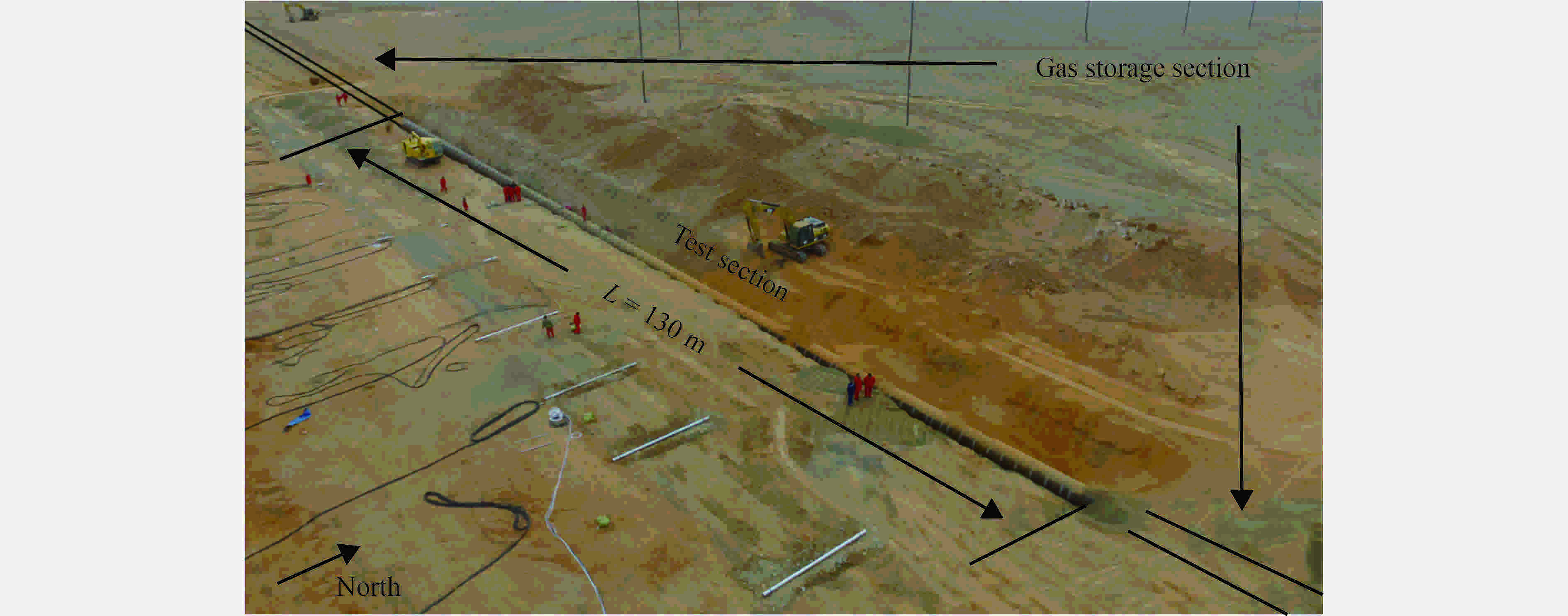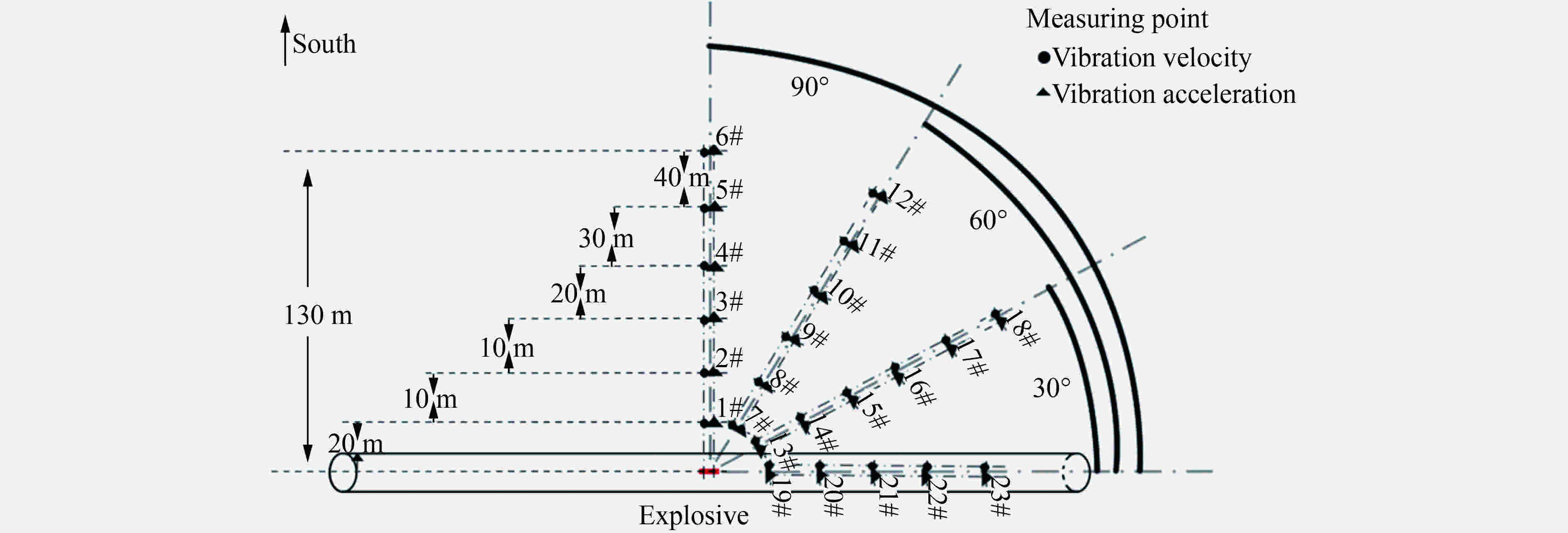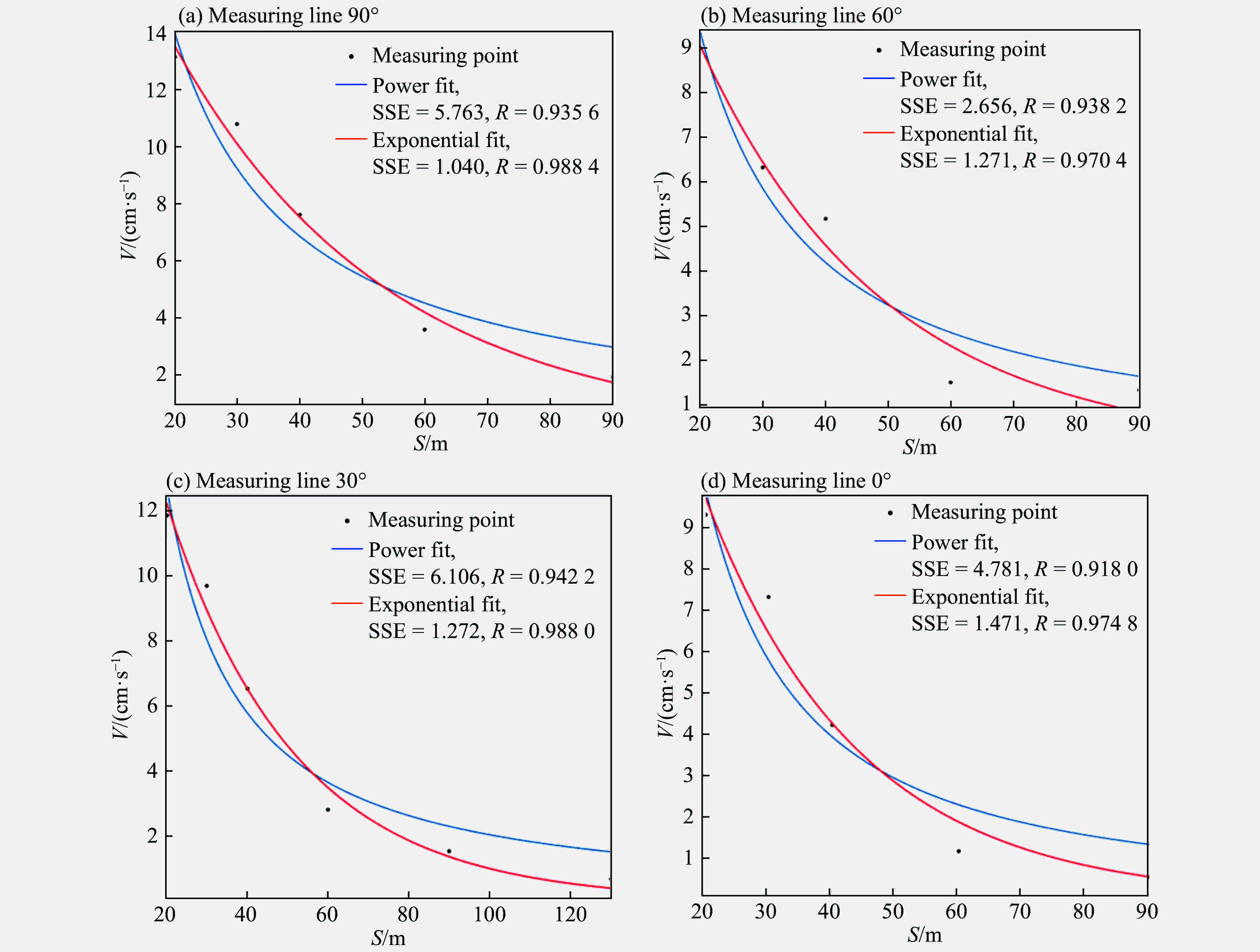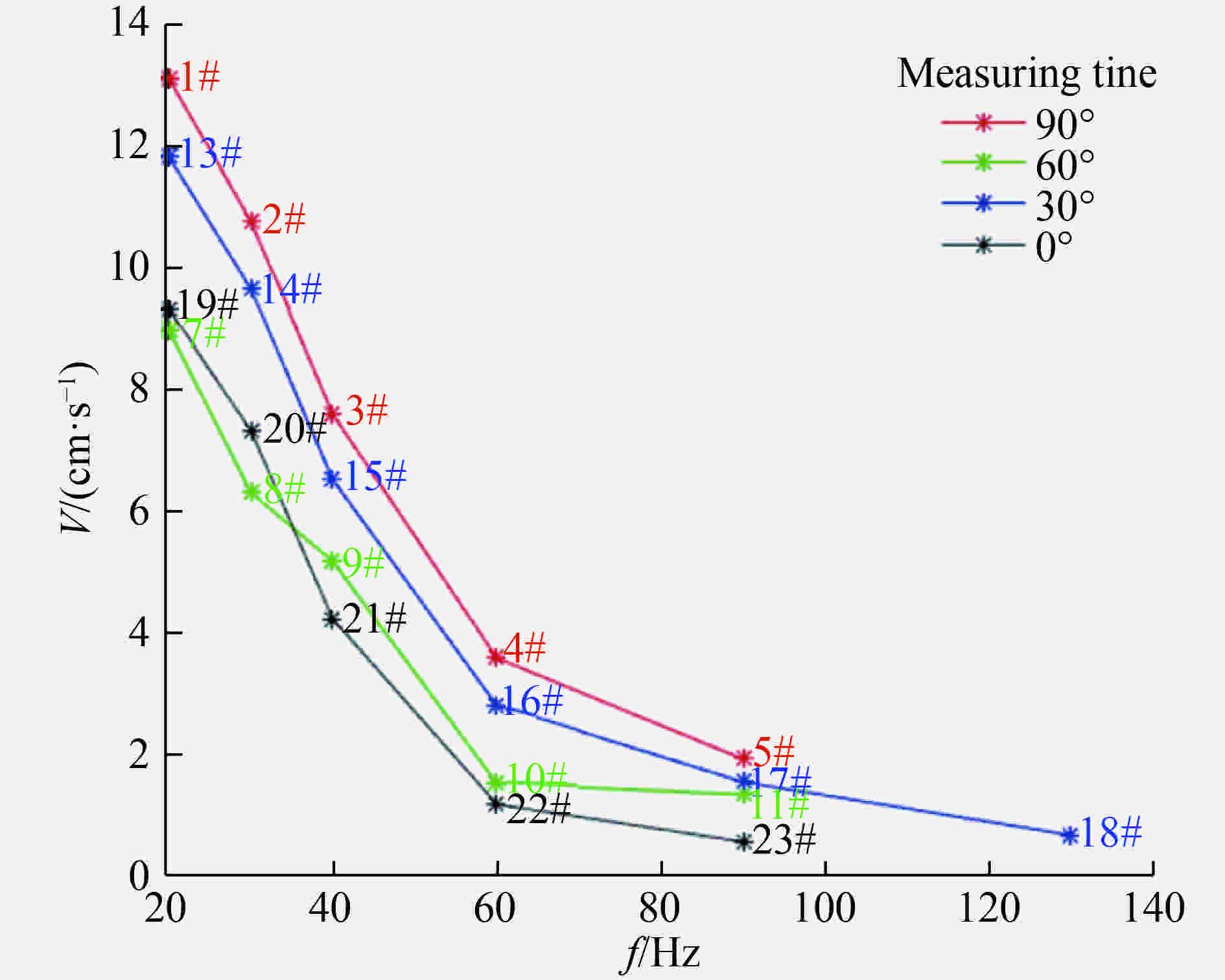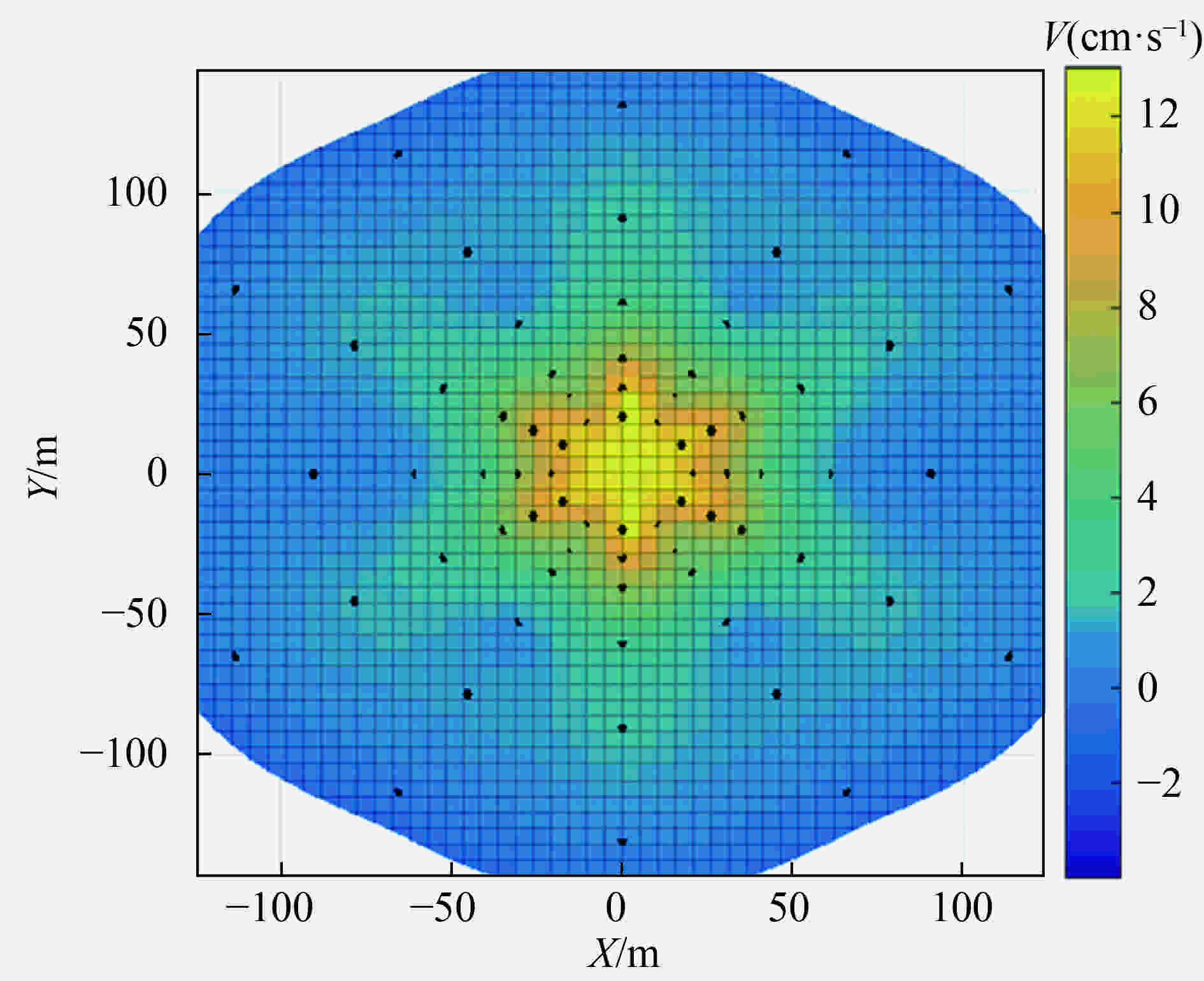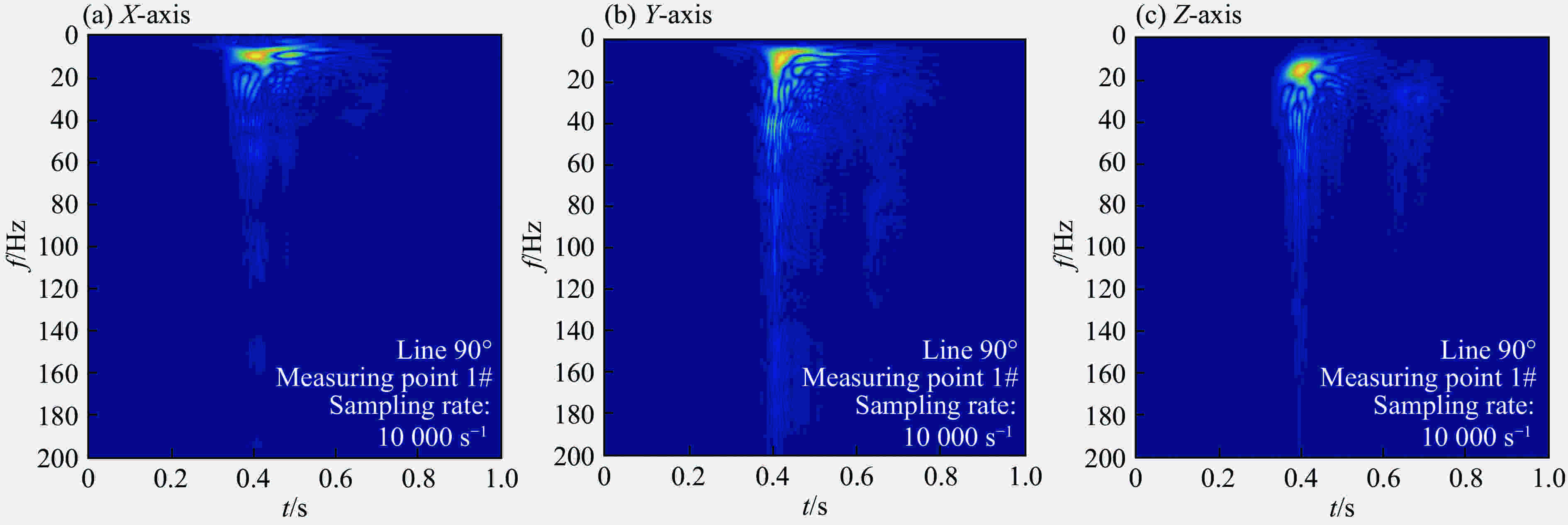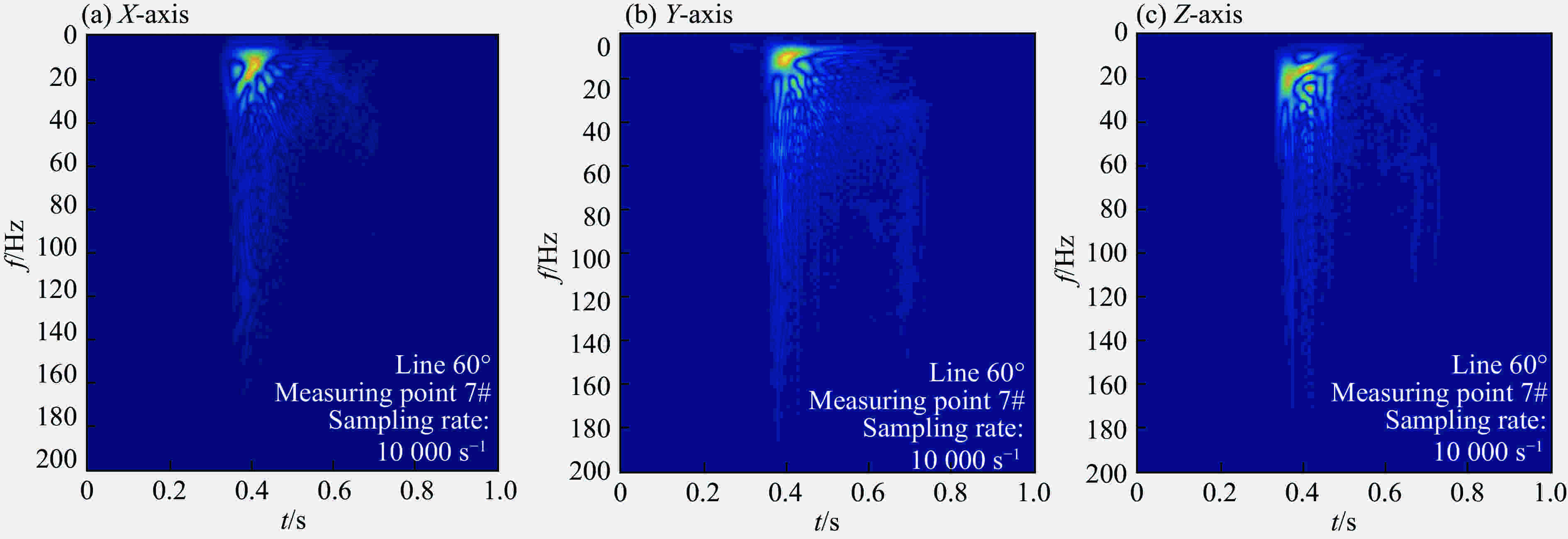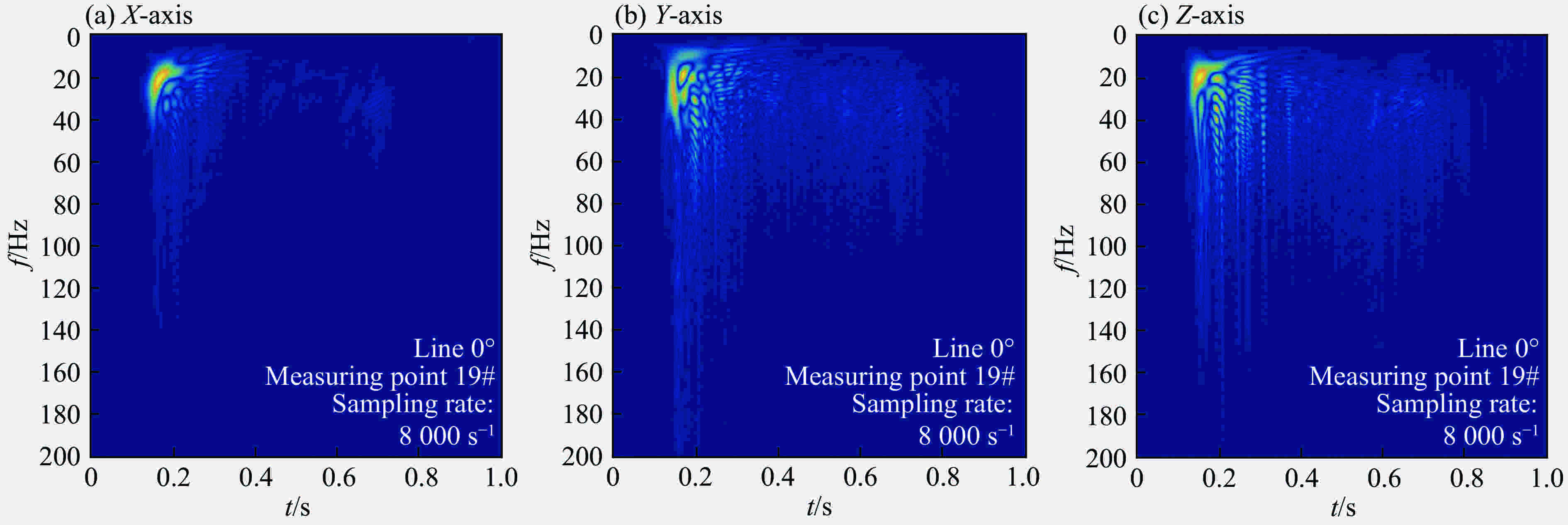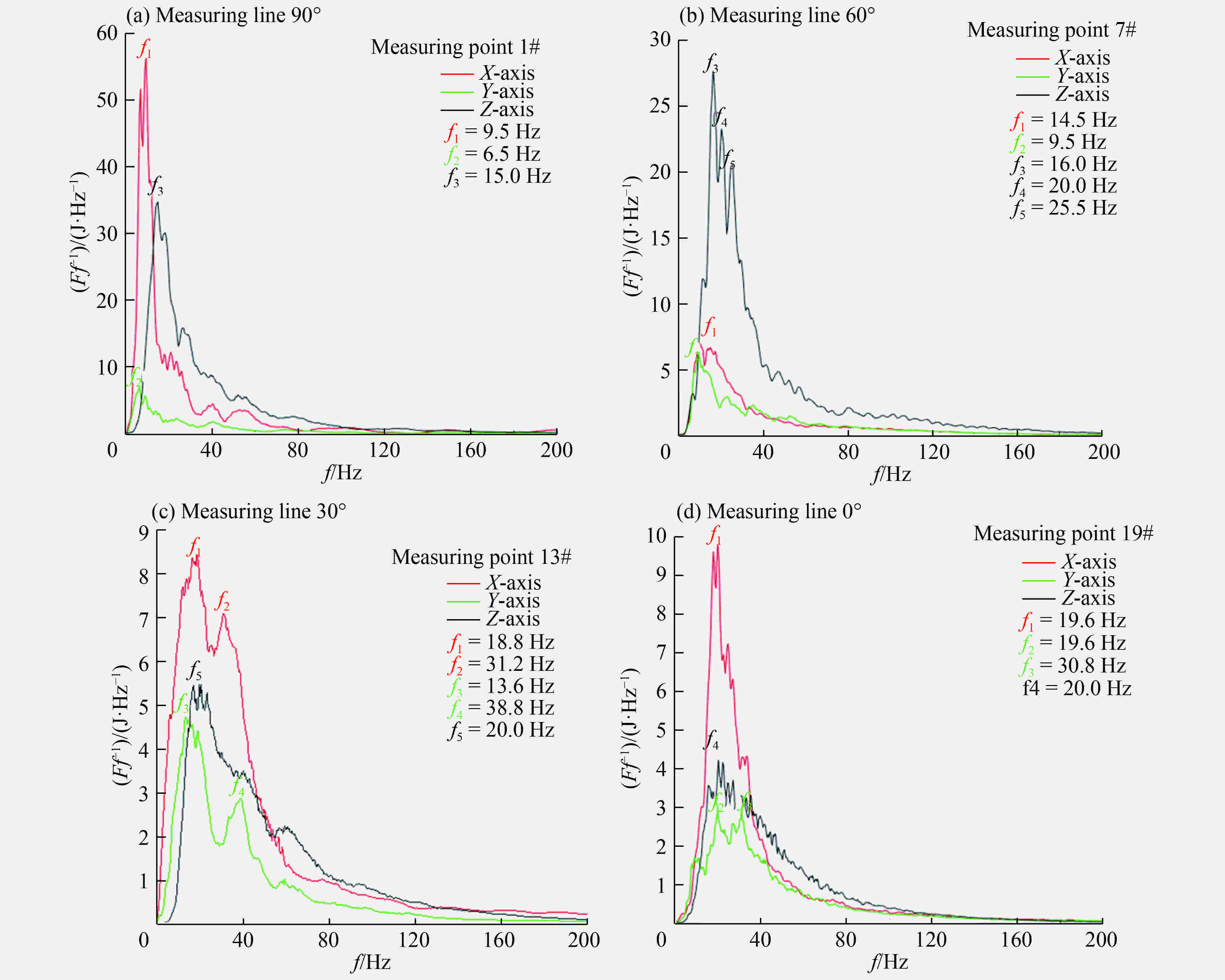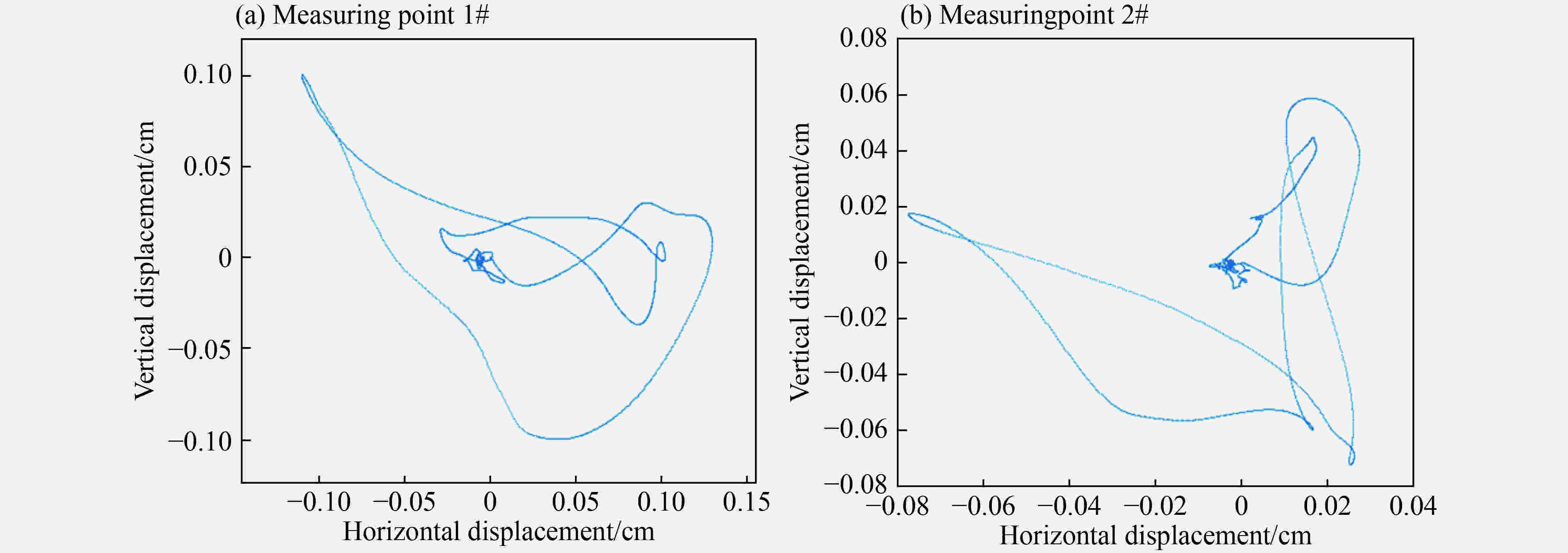Characteristics of space and time-frequency distribution of the vibration in full-scale trunk gas pipeline explosion
-
摘要: 针对第三代大输量天然气管道爆炸振动危害效应展开研究,组织实施了全尺寸天然气管道爆炸试验。经数据分析发现,天然气管道爆炸地振动的衰减更加符合指数分布而非传统幂率分布,且其振动强度在空间内分布不均匀,存在特定方向振动加强的现象。采用改进型的MP-WVD算法分析得到天然气管道爆炸地振动的时频特性,其振动的主要频率范围为10~20 Hz,持续时间为0.1~0.2 s。存在多次加载特性,瑞利波成分强于勒夫波成分。研究成果可为后续管道施工安全设计以及事故现场勘测提供参考。Abstract: In this paper we investigated the damaging effect resulting from the vibration of pipeline gas explosion using a full-scale pipeline gas explosion test and, after data analysis, found that the attenuation of the pipeline vibration was more in line with the exponential distribution than with the classical power law distribution, and that the vibration intensity was not evenly distributed in the space, with a vibration enhancement in a specific direction. Adopting the improved MP-WVD algorithm, we also analyzed the time-frequency characteristics of the vibration in pipeline explosion and found that the main frequency range of vibration was 10−20 Hz, with a duration of 0.1−0.2 s as well as a multiple loading. Finally, we observed that the Rayleigh wave was stronger than the Love wave. These results can serve as reference for pipeline construction and accident investigation.
-
表 4 0° 测线振动速度
Table 4. Data of vibration velocity of measuring line 0°
测点 l/m VX/(cm·s−1) fX/Hz VY/(cm·s−1) fY/Hz VZ/(cm·s−1) fZ/Hz V/(cm·s−1) 19# 20 7.99 27.5 4.33 29.2 5.03 18.9 9.33 20# 30 3.13 26.1 3.03 21.3 6.91 18.2 7.34 21# 40 1.73 22.2 1.63 12.8 4.15 13.6 4.22 22# 60 1.03 18.2 0.85 18.3 1.13 14.2 1.16 23# 90 0.78 17.5 0.61 13.6 0.95 13.7 0.54 表 1 90° 测线振动速度
Table 1. Data of vibration velocity of measuring line 90°
测点 l/m VX/(cm·s−1) fX/Hz VY/(cm·s−1) fY/Hz VZ/(cm·s−1) fZ/Hz V/(cm·s−1) 1# 20 7.14 8.3 6.32 8.2 9.05 15.3 13.15 2# 30 5.32 8.0 5.15 8.6 7.85 16.2 10.79 3# 40 2.95 8.1 3.17 58.5 5.39 18.9 7.60 4# 60 1.44 8.0 2.37 60.4 2.31 15.4 3.57 5# 90 2.58 7.9 1.85 7.9 3.94 13.8 1.90 6# 130 − − − − − − − 表 3 30° 测线振动速度
Table 3. Data of vibration velocity of measuring line 30°
测点 l/m VX/(cm·s−1) fX/Hz VY/(cm·s−1) fY/Hz VZ/(cm·s−1) fZ/Hz V/(cm·s−1) 13# 20 8.46 15.5 6.96 15.2 6.56 22.9 11.86 14# 30 3.19 18.1 1.82 23.5 9.46 15.1 9.68 15# 40 2.54 17.5 0.91 16.7 5.43 20.3 6.52 16# 60 1.32 20.1 0.99 8.8 2.22 16.1 2.79 17# 90 0.85 16.6 0.75 18.0 1.40 19.7 1.53 18# 130 0.36 19.1 0.38 17.3 0.54 17.9 0.65 表 2 60° 测线振动速度
Table 2. Data of vibration velocity of measuring line 60°
测点 l/m VX/(cm·s−1) fX/Hz VY/(cm·s−1) fY/Hz VZ/(cm·s−1) fZ/Hz V/(cm·s−1) 7# −20 5.37 8.0 4.58 61.2 8.77 13.7 9.01 8# −30 4.33 17.7 3.71 60.6 7.92 14.0 6.31 9# −40 4.76 16.8 2.41 16.0 2.41 13.8 5.17 10# −60 1.35 13.5 1.09 7.9 0.81 20.2 1.50 11# −90 1.00 12.0 0.74 8.3 1.08 16.8 1.32 12# 130 − − − − − − − -
[1] 范照伟. 全球天然气发展格局及我国天然气发展方向分析 [J]. 中国矿业, 2018, 27(4): 11–16; 22FAN Zhaowei. Global natural gas development pattern and the analysis of development direction of natural gas in China [J]. China Mining Magazine, 2018, 27(4): 11–16; 22 [2] 帅健. 美国油气管道事故及其启示 [J]. 油气储运, 2010, 29(11): 806–809. DOI: 10.6047/j.issn.1000-8241.2010.11.002SHUAI Jian. Oil and gas pipeline accident in the United States and its enlightenment [J]. Oil and Gas Storage and Transportation, 2010, 29(11): 806–809. DOI: 10.6047/j.issn.1000-8241.2010.11.002 [3] 胡灯明, 骆晖. 国内外天然气管道事故分析 [J]. 石油工业技术监督, 2009(9): 8–12. DOI: 10.3969/j.issn.1004-1346.2009.09.002HU Dengming, LUO Hui. Case analysis of oil and gas pipeline accidents at home and abroad [J]. Technology Supervision in Petroleum Industry, 2009(9): 8–12. DOI: 10.3969/j.issn.1004-1346.2009.09.002 [4] YANG S, FANG Q, ZHANG Y, et al. An integrated quantitative hazard analysis method for natural gas jet release from underground gas storage caverns in salt rock. Ⅰ: Models and validation [J]. Journal of Loss Prevention in the Process Industries, 2013, 26(1): 74–81. doi: 10.1016/j.jlp.2012.09.008 [5] LOWESMITH B J, HANKINSON G. Large scale experiments to study fires following the rupture of high pressure pipelines conveying natural gas and natural gas/hydrogen mixtures [J]. Process Safety and Environmental Protection, 2013, 91(1): 101–111. [6] BARALDI D, KOTCHOURKO A, LELYAKIN A, et al. An inter-comparison exercise on CFD model capabilities to simulate hydrogen deflagrations in a tunnel [J]. International Journal of Hydrogen Energy, 2009, 34(18): 7862–7872. doi: 10.1016/j.ijhydene.2009.06.055 [7] GALLEGO E, MIGOYA E, MARTIN-VALDEPENAS J M, et al. An intercomparison exercise on the capabilities of CFD models to predict distribution and mixing of H2 in a closed vessel [J]. International Journal of Hydrogen Energy, 2007, 32(13): 2235–2245. doi: 10.1016/j.ijhydene.2007.04.009 [8] SU Huayou. Analysis of characteristics of compound vibration and effects to surrounding gas pipeline caused by impact and explosion [J]. Procedia Engineering, 2011, 26: 1835-1843. [9] MAHDAVI H, KENNY S, PHILLIPS R, et al. Influence of geotechnical loads on local buckling behavior of buried pipelines [C]//2008 7th International Pipeline Conference. American Society of Mechanical Engineers, 2008: 543–551. [10] 李洪涛, 卢文波, 舒大强, 等. 爆破地震波的能量衰减规律研究 [J]. 岩石力学与工程学报, 2010, 29(S1): 3364–3369LI Hongtao, LU Wenbo, SHU Daqiang, et al. Study of energy attenuation law of blast-induced seismic wave [J]. Chinese Journal of Rock Mechanics and Engineering, 2010, 29(S1): 3364–3369 [11] 吕涛, 石永强, 黄诚, 等. 非线性回归法求解爆破振动速度衰减公式参数 [J]. 岩土力学, 2007(9): 1871–1878. DOI: 10.3969/j.issn.1000-7598.2007.09.019LYU Tao, SHI Yongqiang, HUANG Cheng, et al. Study on attenuation parameters of blasting vibrationby nonlinear regression analysis [J]. Rock and Soil Mechanics, 2007(9): 1871–1878. DOI: 10.3969/j.issn.1000-7598.2007.09.019 [12] 周辉, 龙源, 钟明寿, 等. 基于双参数MP算法的不同孔深爆炸地震波特性研究 [J]. 振动与冲击, 2016, 35(18): 76–81. DOI: 10.13465/j.cnki.jvs.2016.18.013ZHOU Hui, LONG Yuan, ZHONG Mingshou, et al. Characteristics analysis of explosion seismic waves with different hole depth based on the method of double parameters matching pursuit [J]. Journal of Vibration and Shock, 2016, 35(18): 76–81. DOI: 10.13465/j.cnki.jvs.2016.18.013 [13] 闫孔明, 刘飞成, 朱崇浩, 等. 地震作用下含倾斜软弱夹层斜坡场地的动力响应特性研究 [J]. 岩石力学与工程学报, 2017, 36(11): 2686–2698YAN Kongming, LIU Feicheng, ZHU Chonghao, et al. Dynamic responses of slopes with intercalated soft layers under seismic excitations [J]. Chinese Journal of Rock Mechanics and Engineering, 2017, 36(11): 2686–2698 [14] 梅比, 汪旭光, 杨仁树. 基于改进MP-WVD算法的核电厂建设爆破振动信号处理方法[J]. 爆炸与冲击, 2019, 39(4): 045201. DOI: 10.11883/bzycj-2018-0055.MEI Bi, WANG Xuguang, YANG Renshu. Blasting vibration signal analysis technology of construction of nuclear power plant based on improved MP-WVD algorithm [J]. Explosion and Shock Waves, 2019, 39(4): 045201. DOI: 10.11883/bzycj-2018-0055. -







 下载:
下载:
